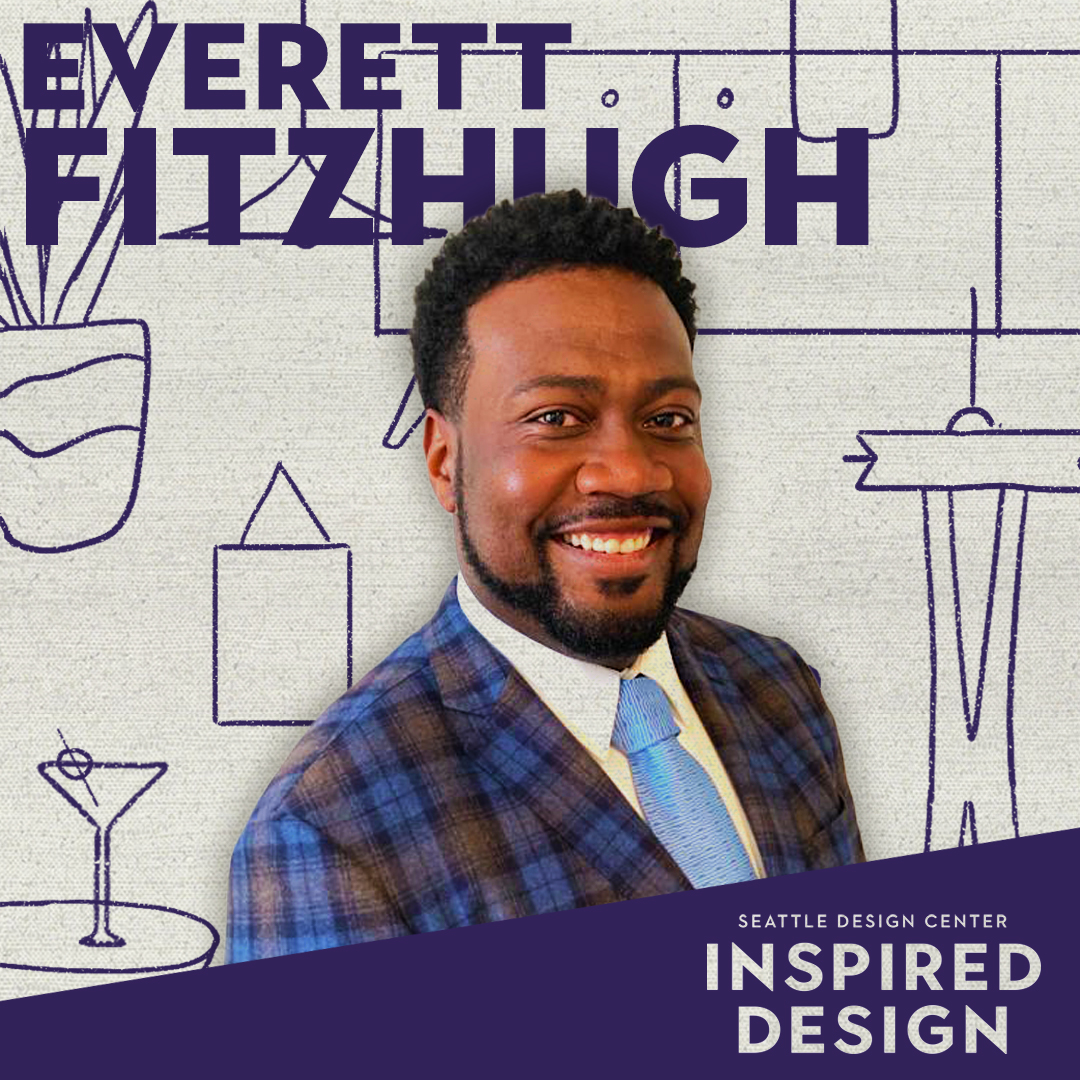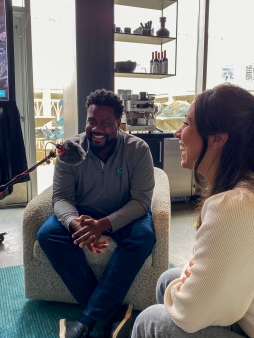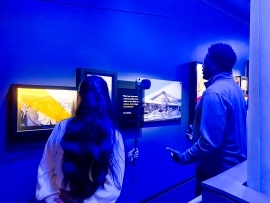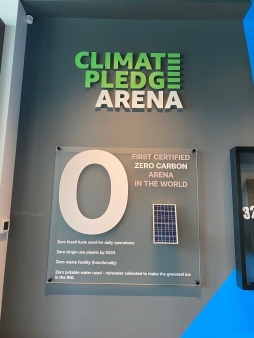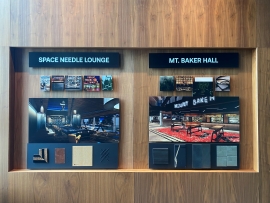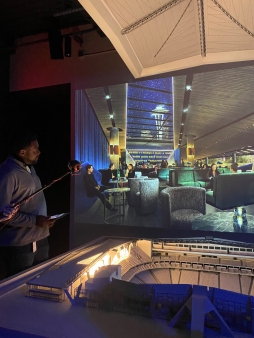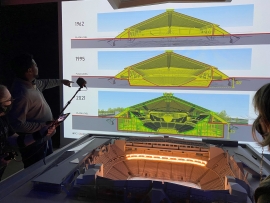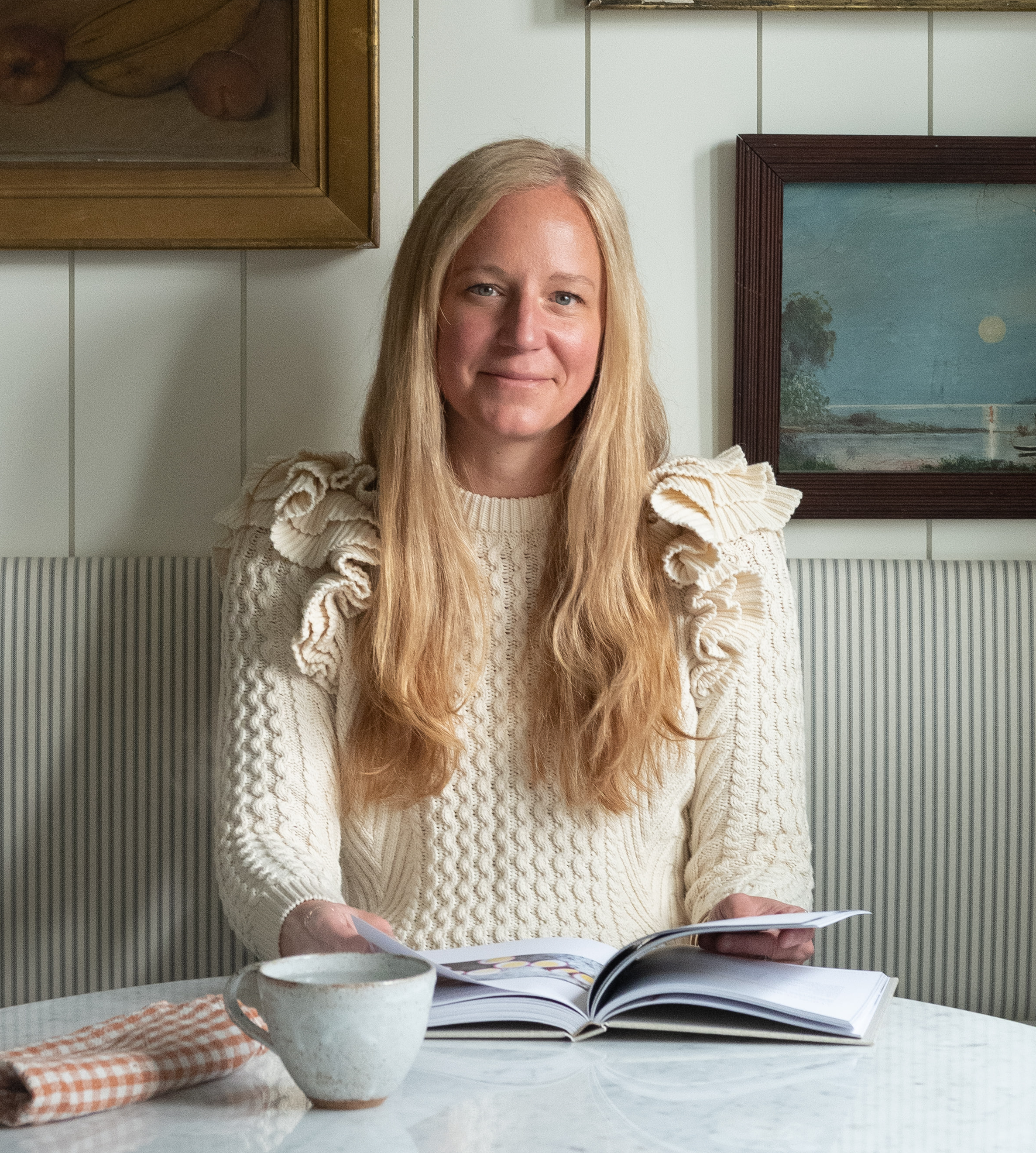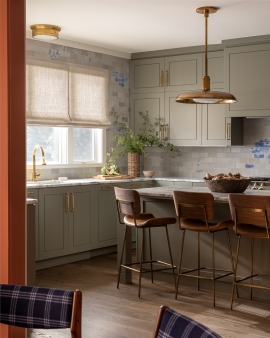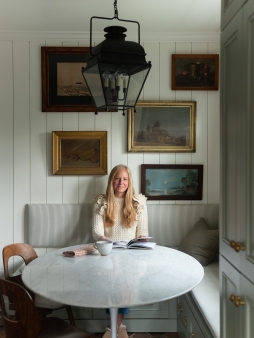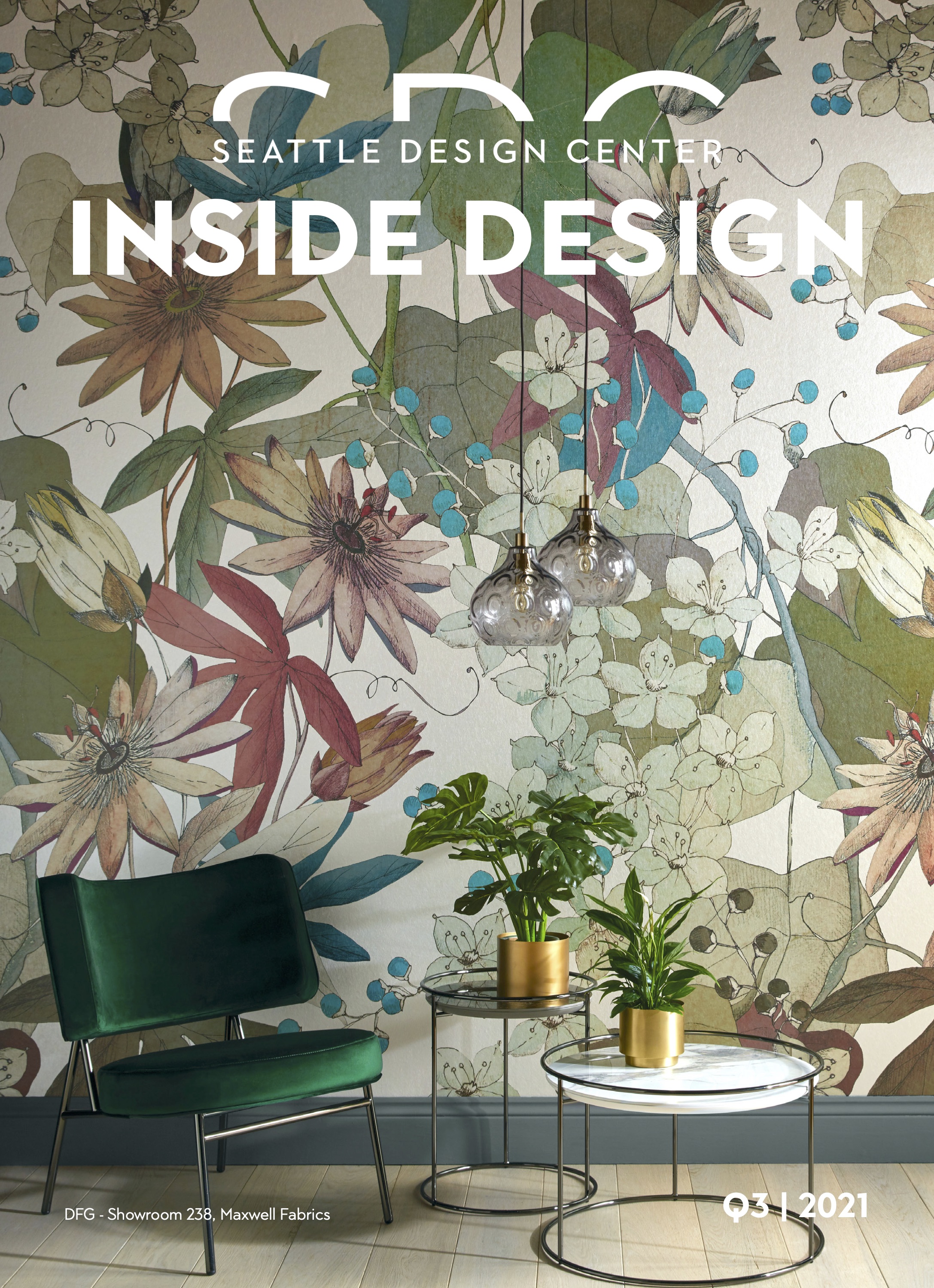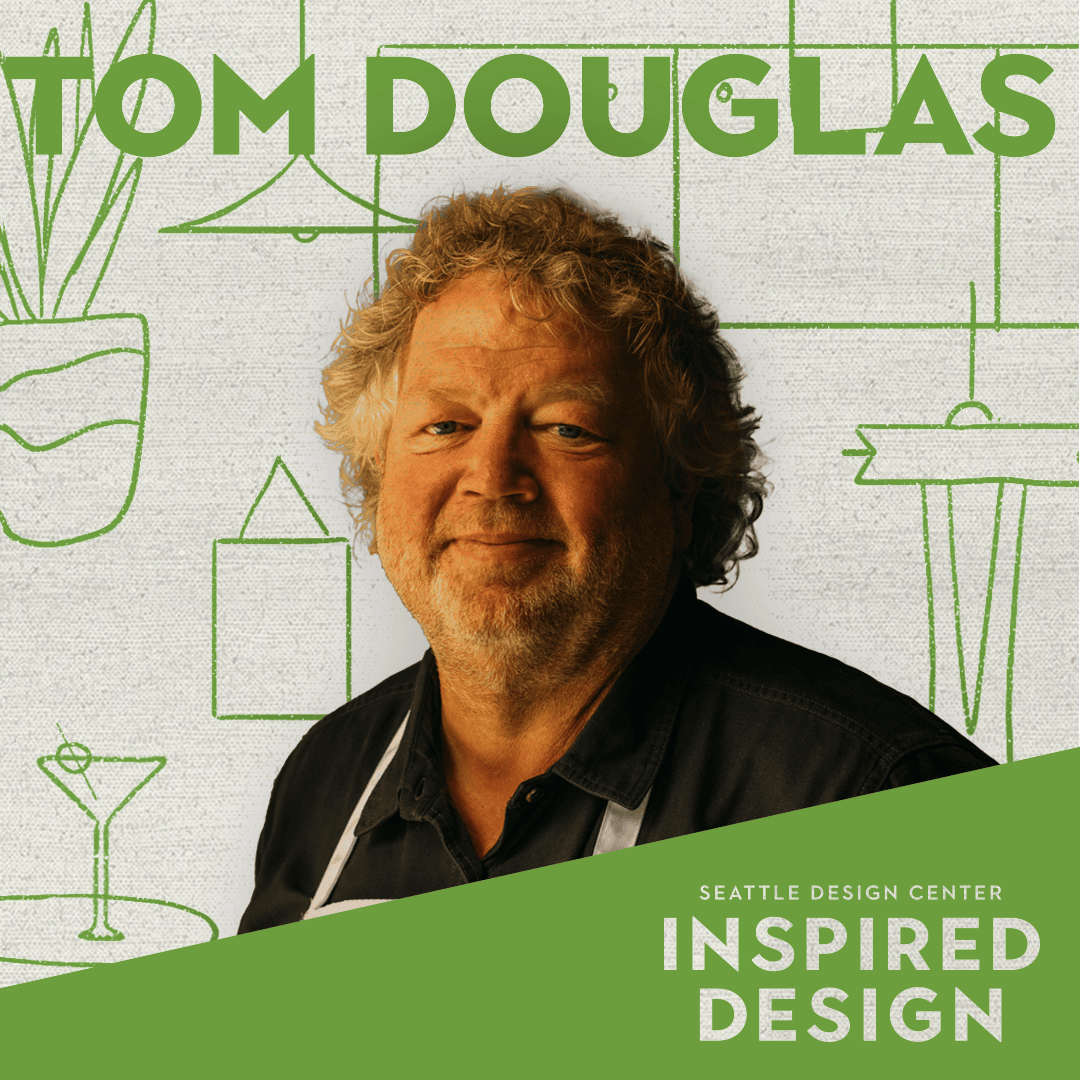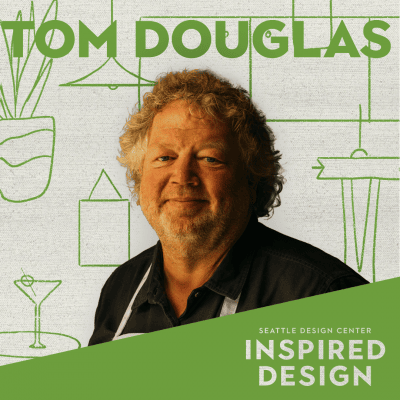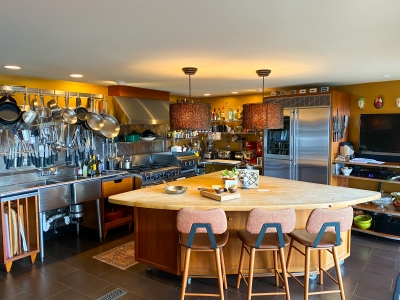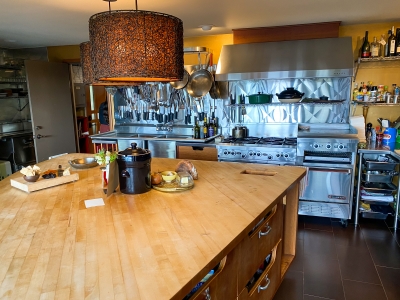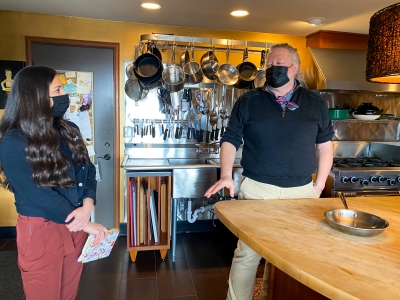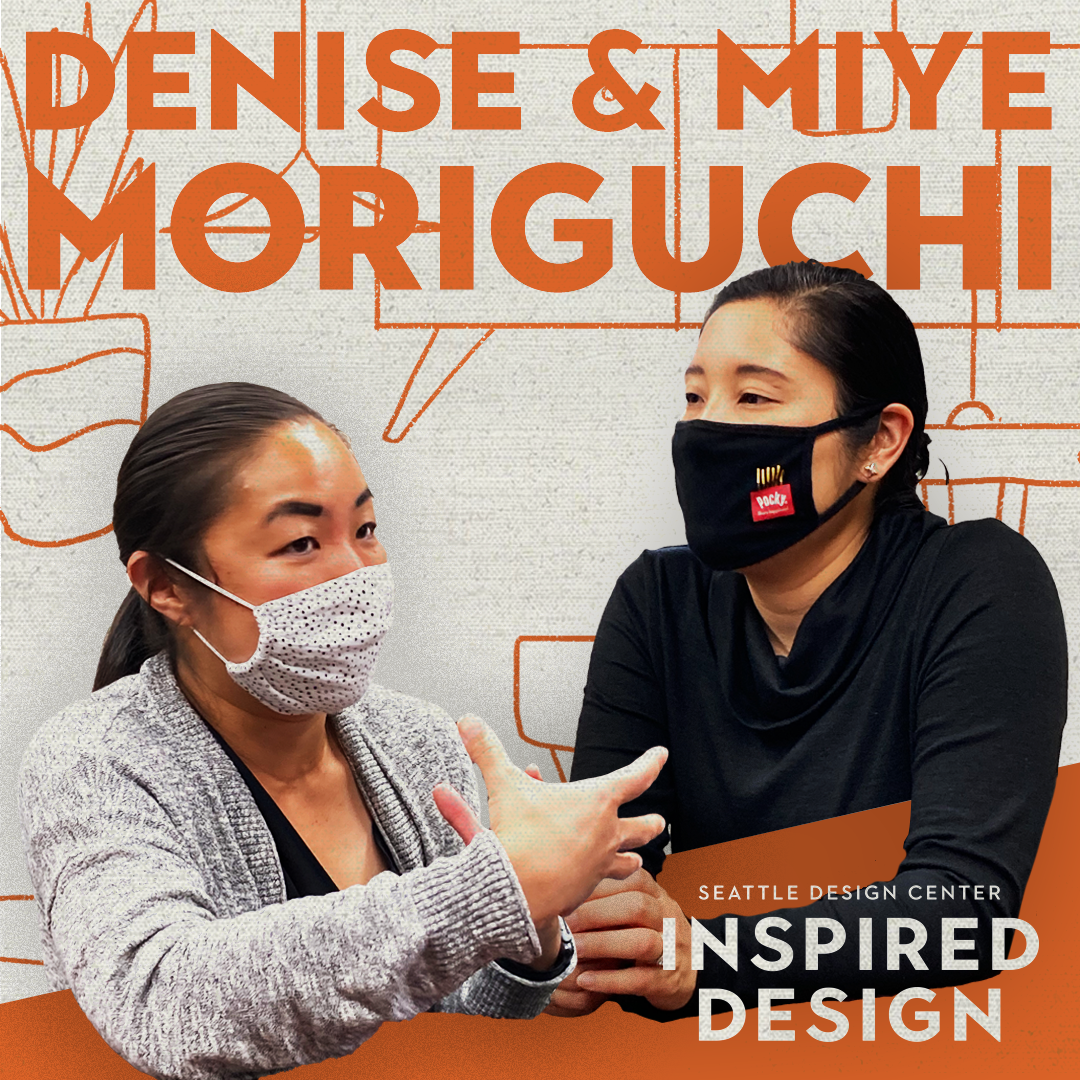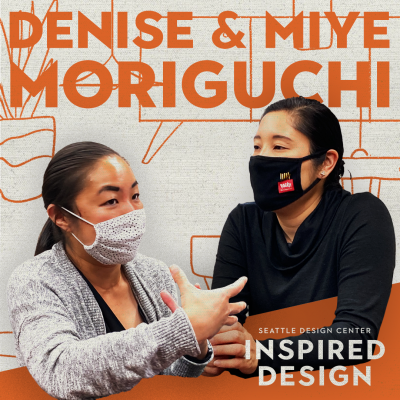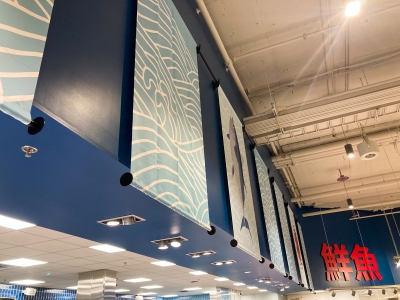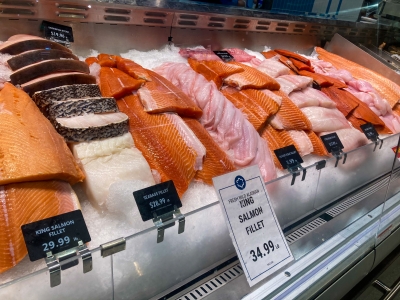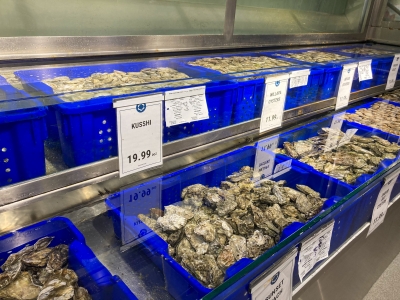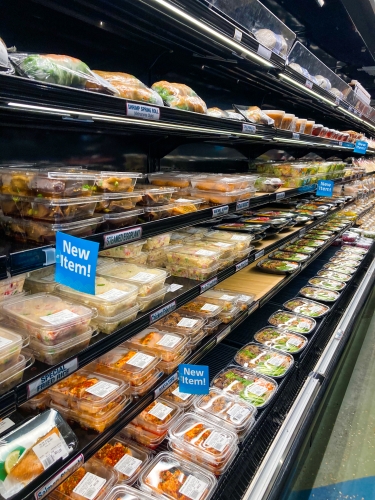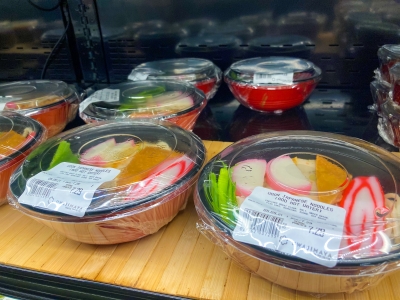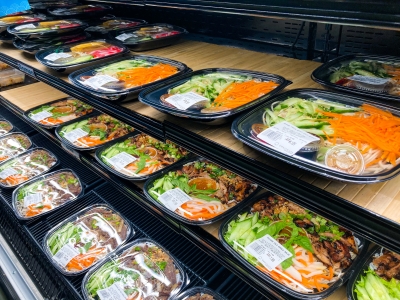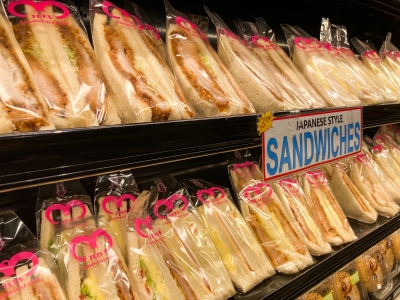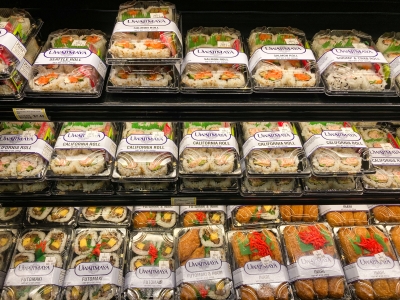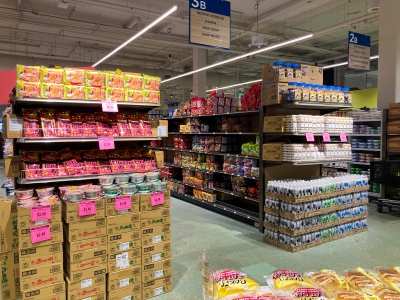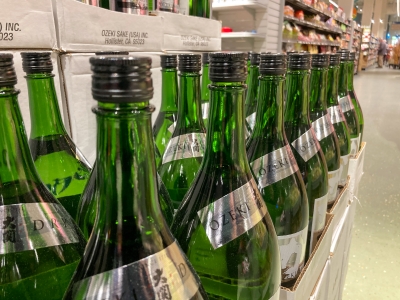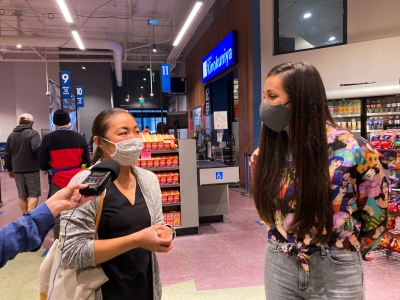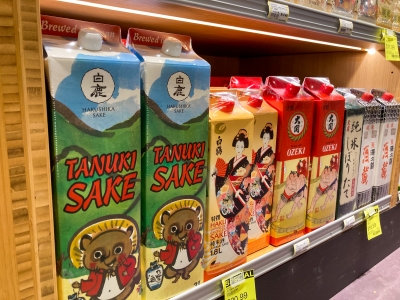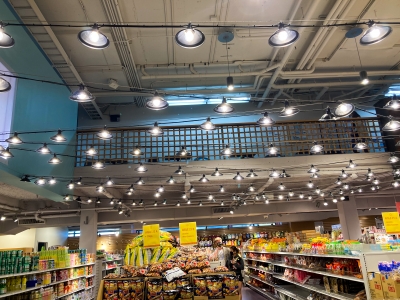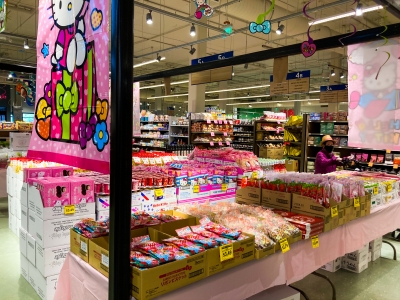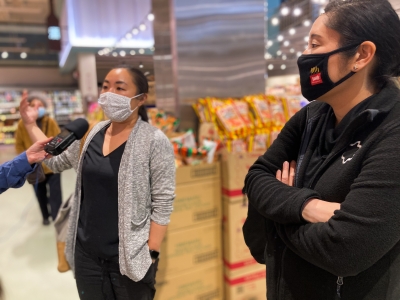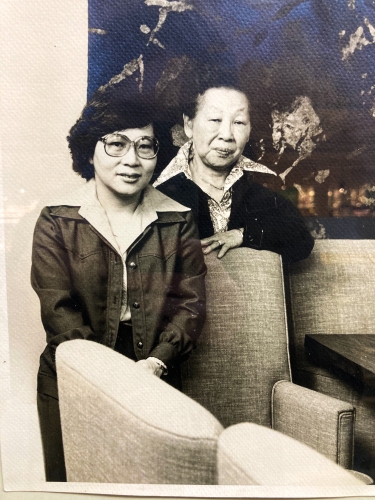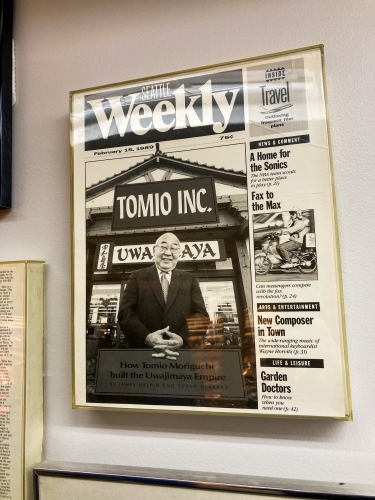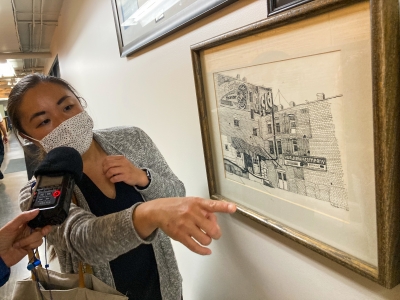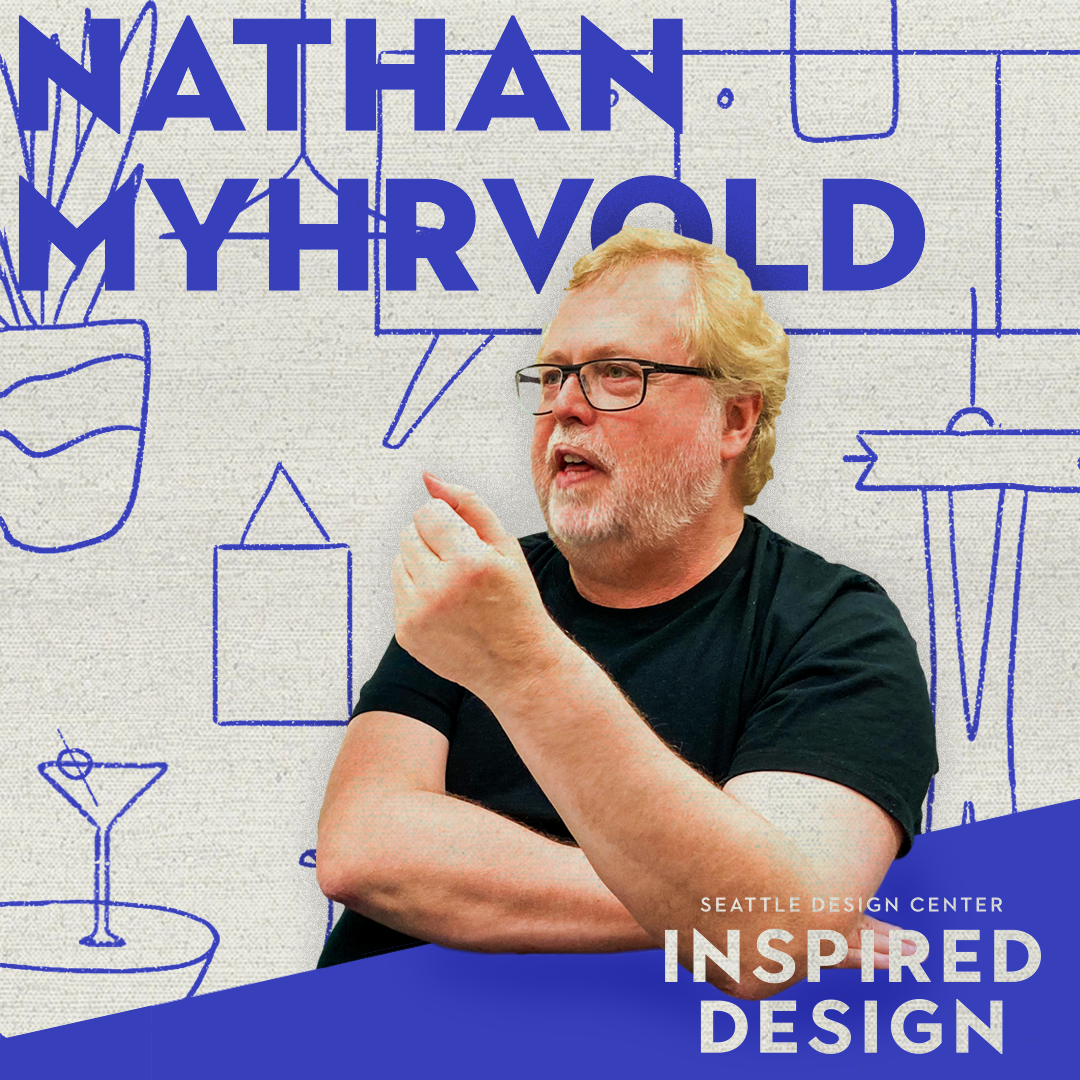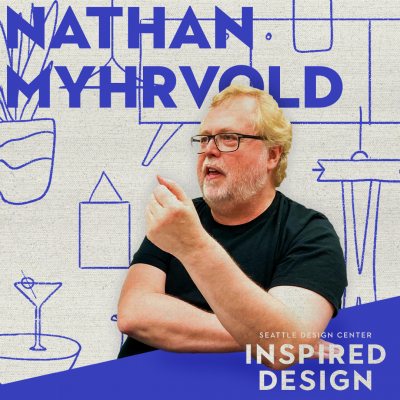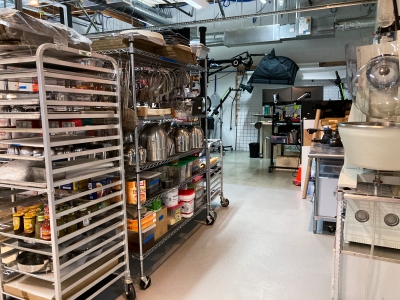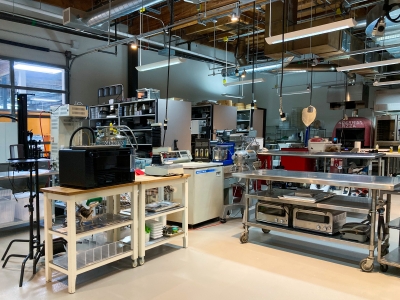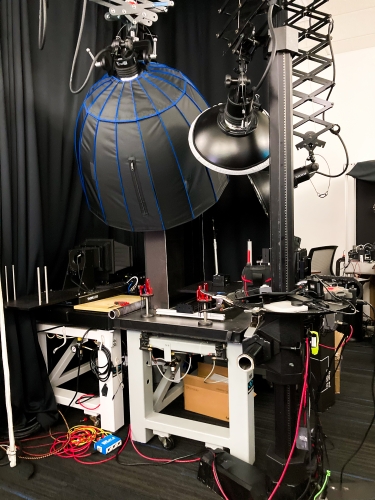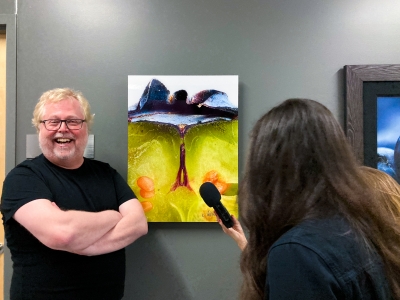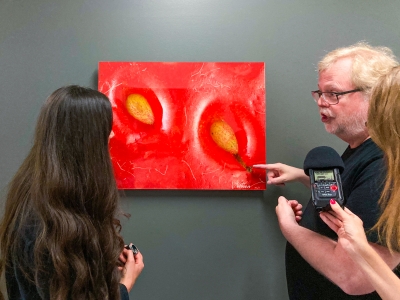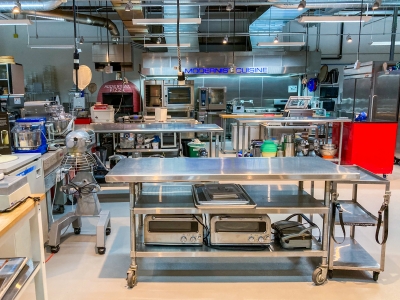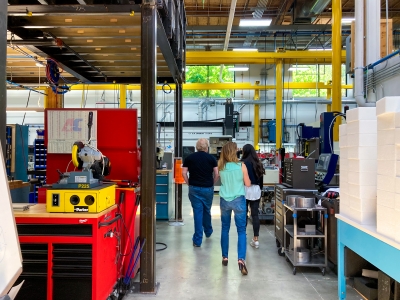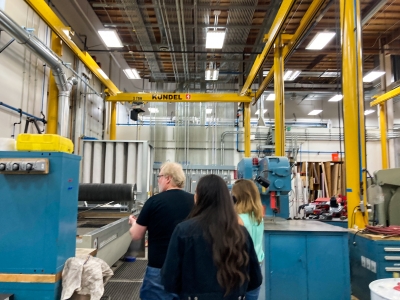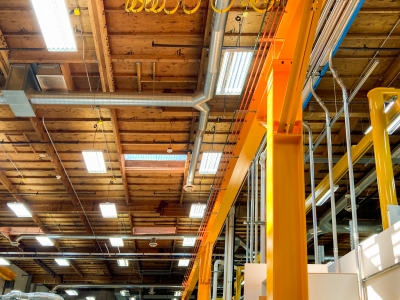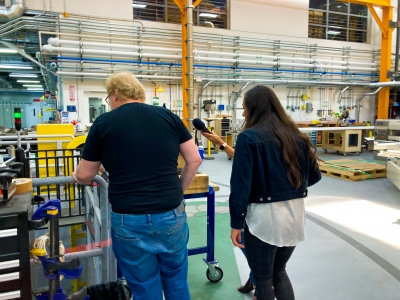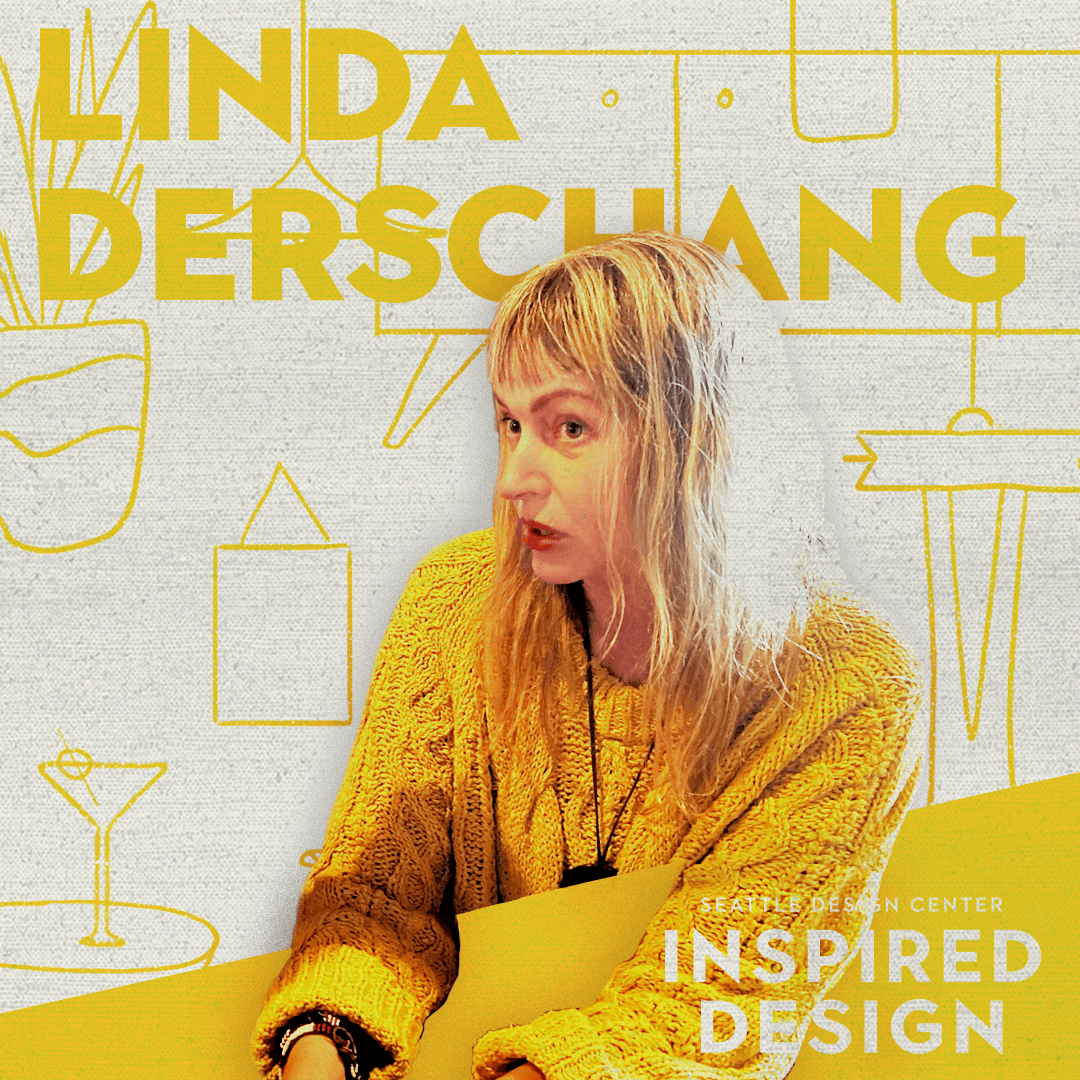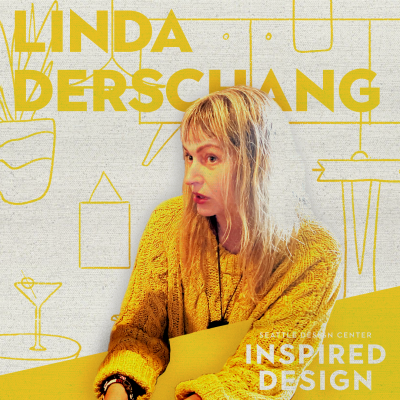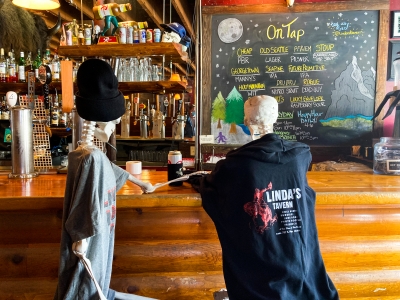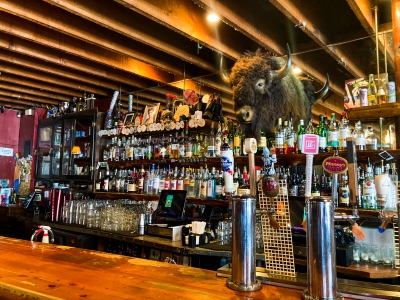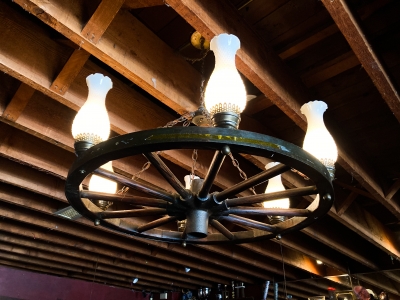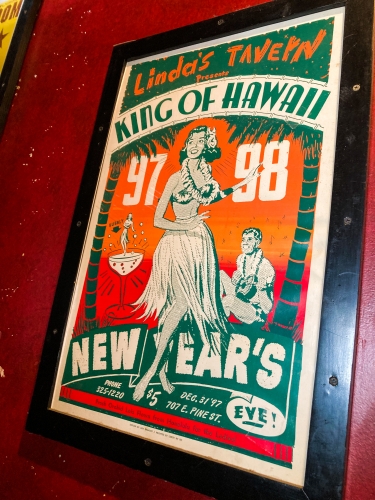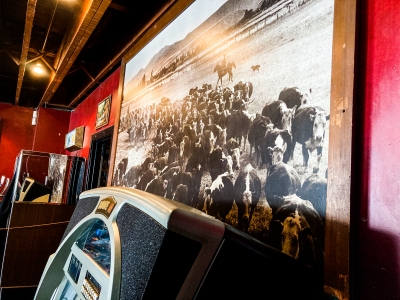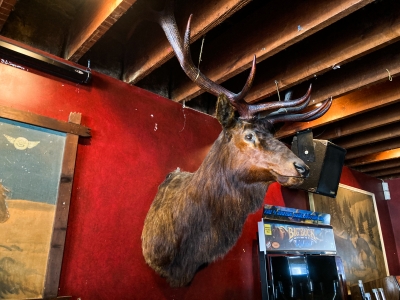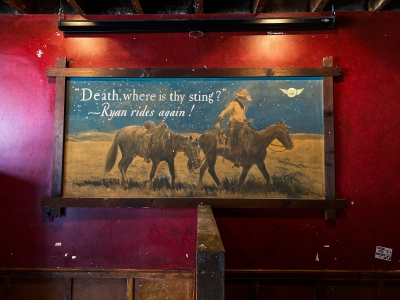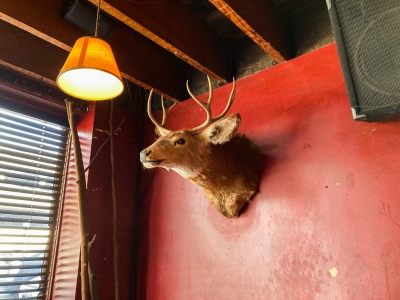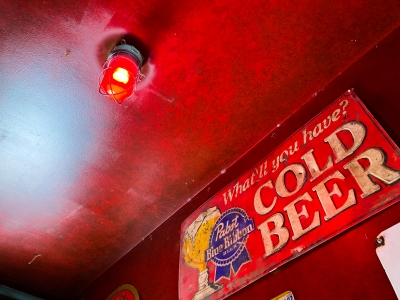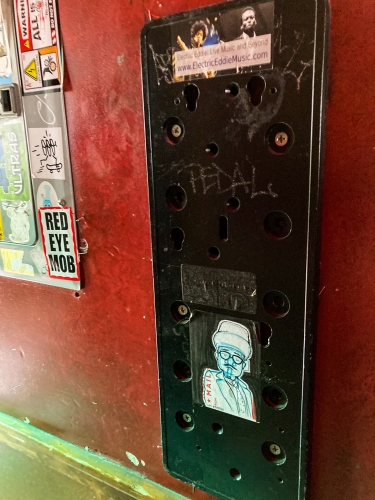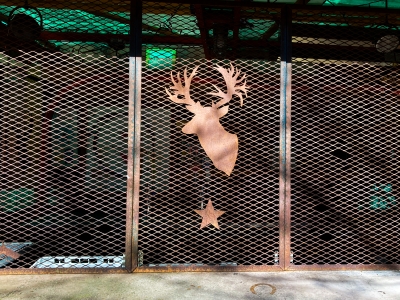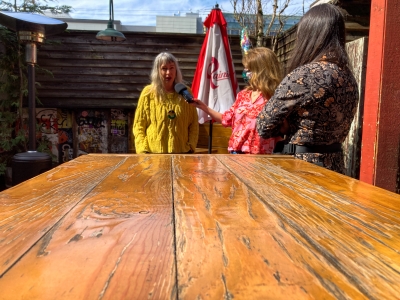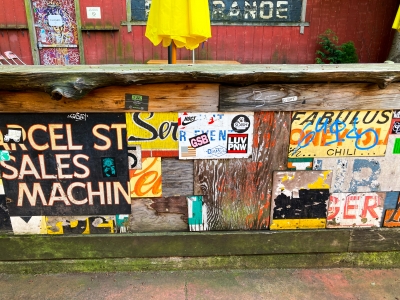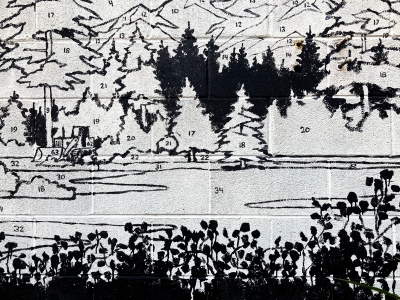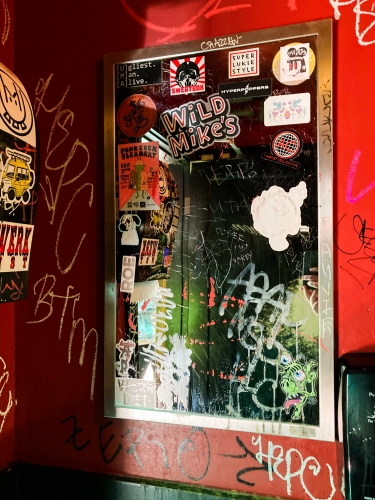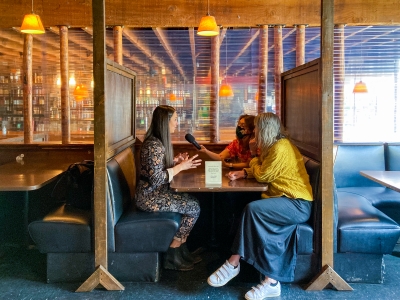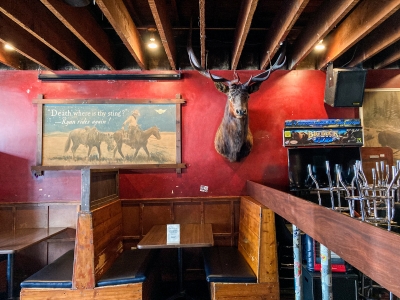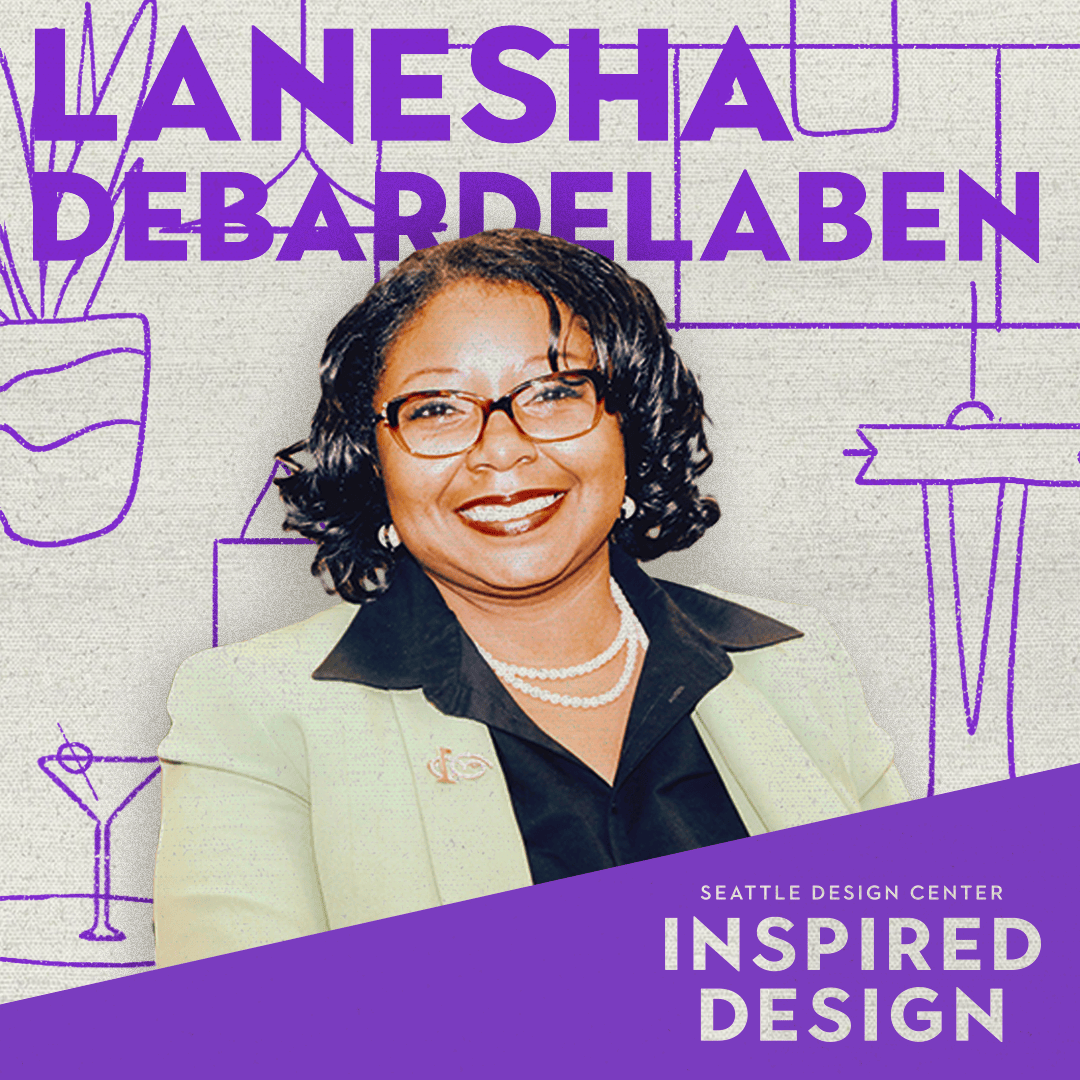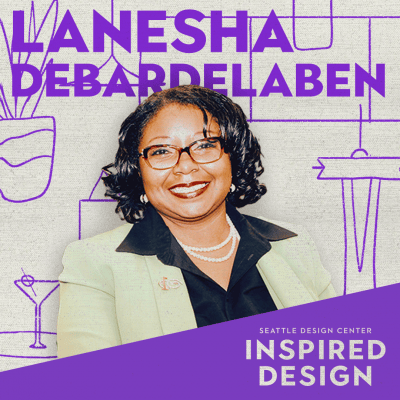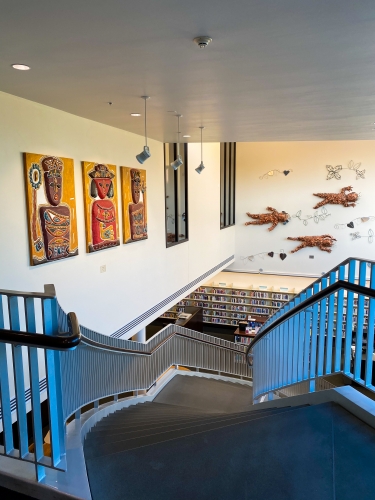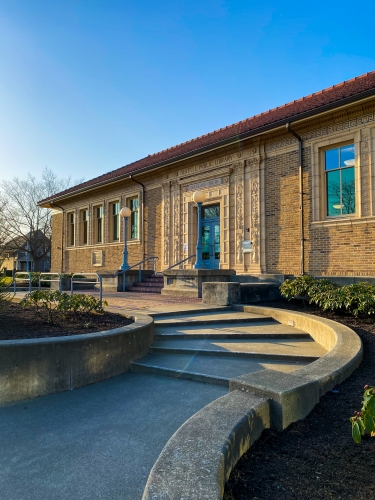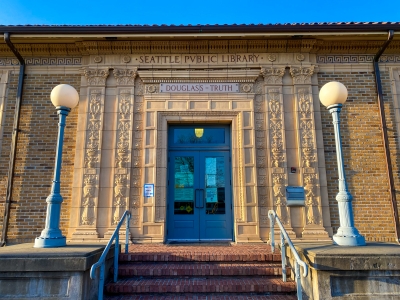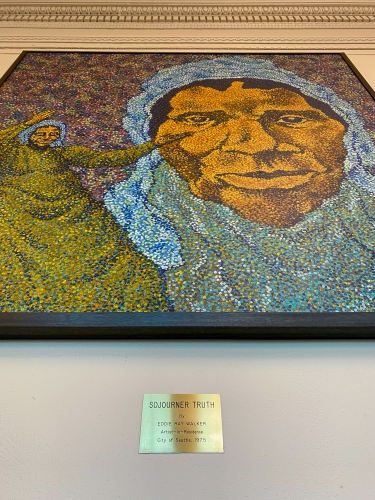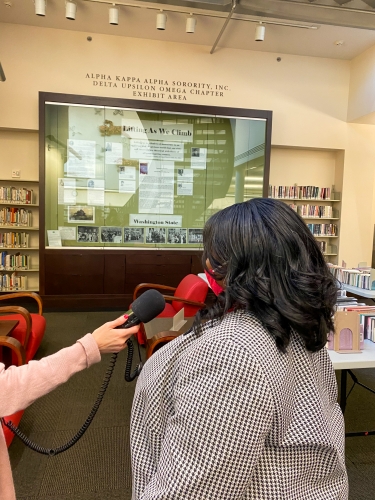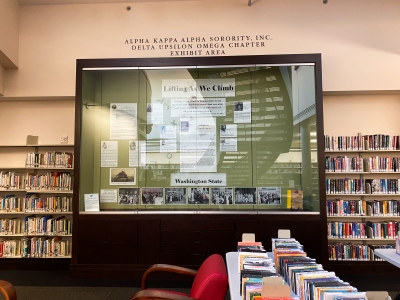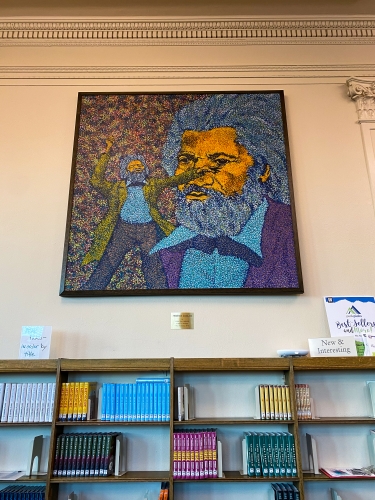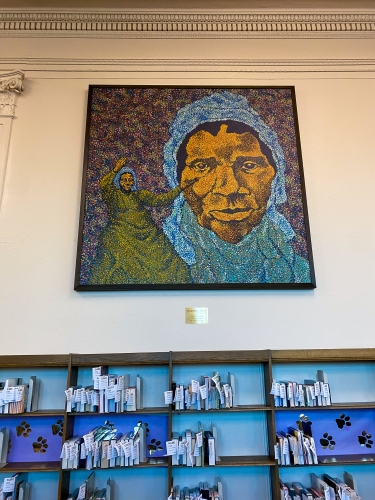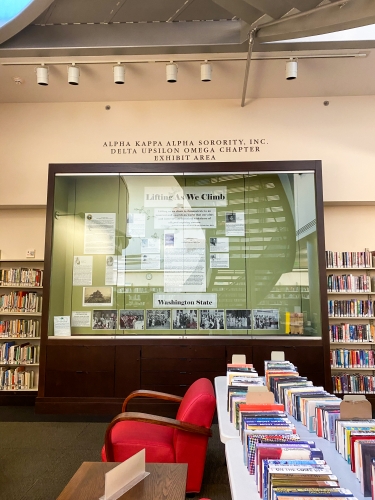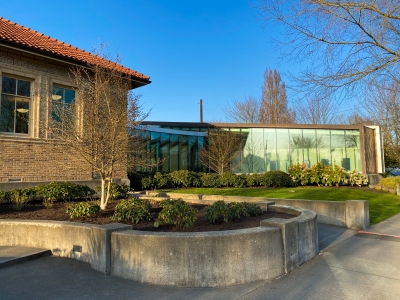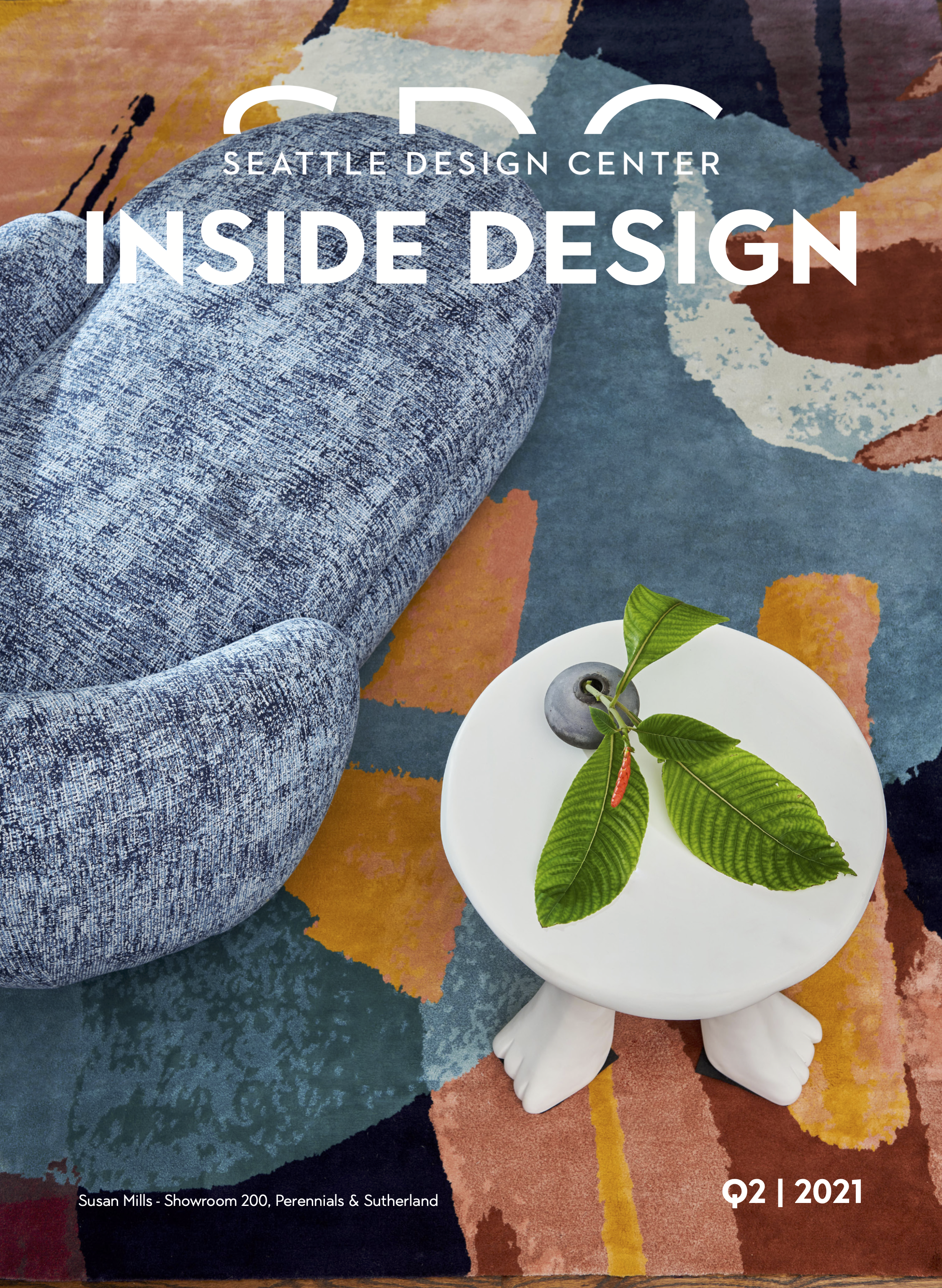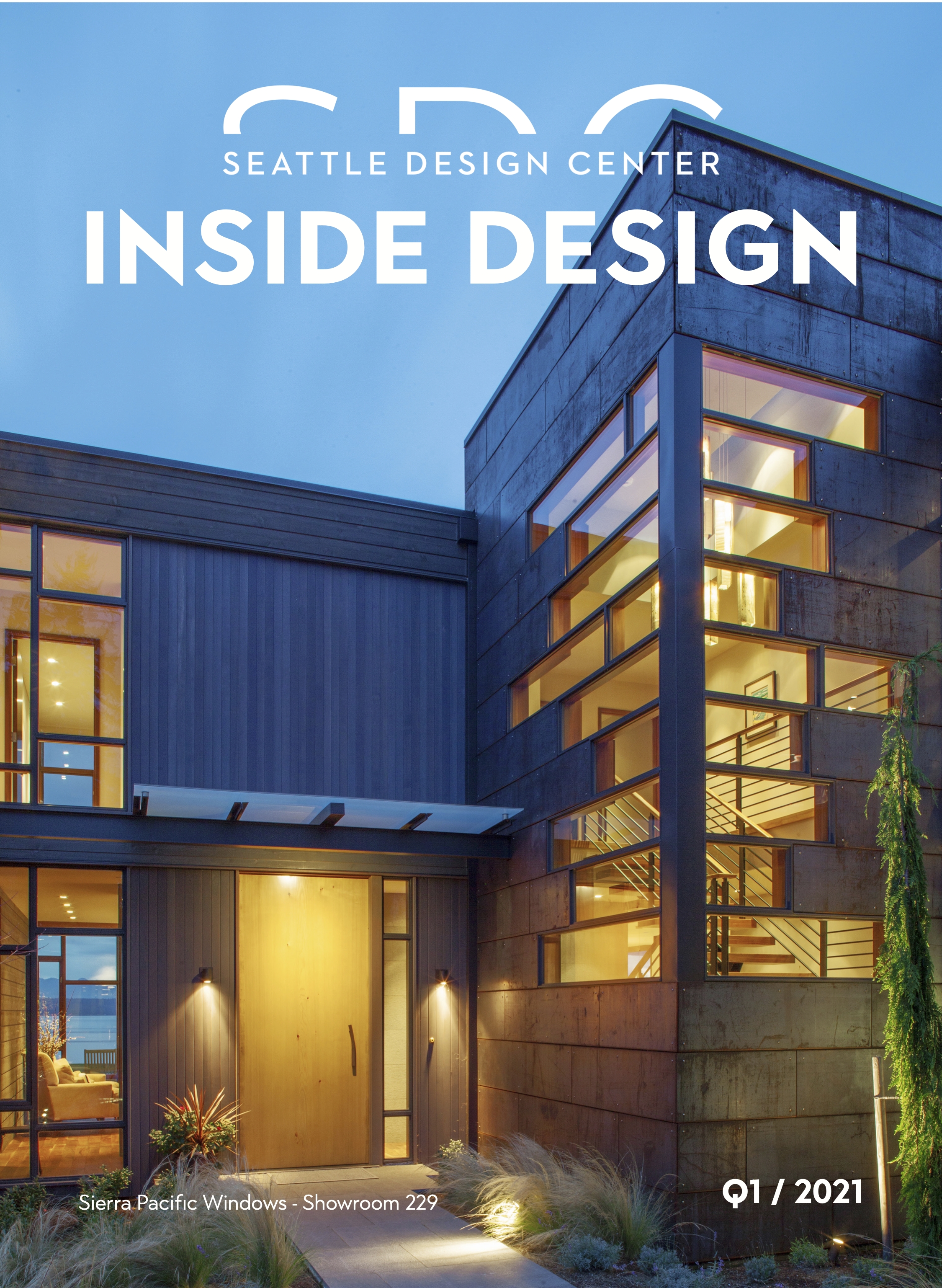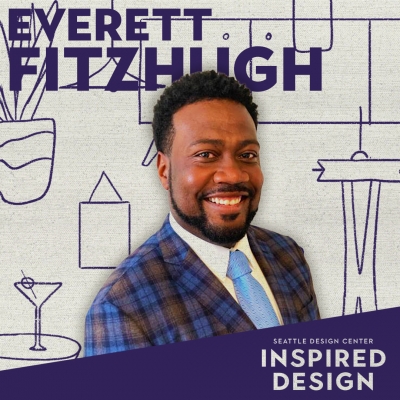
Everett Fitzhugh | Keeping it Kraken
In this episode of Inspired Design, let NHL announcer, Everett Fitzhugh’s contagious energy and passion for the future seep through your speakers and into your ears. You will be transported to the new Climate Pledge Area and get an endearing glimpse into why Everett is so proud to make history with The Seattle Kraken!
Listen on your platform of choice
[abcf-grid-gallery-custom-links id=”4440″]
Explore this Episode
Episode Transcript
Everett Fitzhugh:
I’ve got a lot of energy, and I’ve got a lot of passion, and I have a lot of volume when I speak. Like my goal call, “He scores!” It’s a very deep goal call. So you do that enough time, I guess your voice gets used to it, but,
Gina Colucci:
But I’m Gina Colucci with the Seattle Design Center. Every week on Inspired Design, we sit down with an iconic creator in a space that inspires them.
Everett Fitzhugh:
So many people speak with such reverence of the old Key Arena. Then you preserve the history of the building, the iconic historic roof that is still there,
Gina Colucci:
I had the chance to meet Everett Fitzhugh at the Climate Pledge Arena Preview Center. Everett is the Kraken’s first play-by-play announcer, and the first full-time Black broadcaster in NHL history.
Everett Fitzhugh:
I hope it tells that nine-year-old Black kid in south Seattle that you belong in this game. There’s a place for you.
Gina Colucci:
He became a hockey fan as a kid.
Everett Fitzhugh:
The culture of hockey is something that I fell in love with.
Gina Colucci:
But got his first taste of NHL broadcasting in 2018.
Everett Fitzhugh:
As a play-by-play announcer, I’m following the puck. He may be looking,
Gina Colucci:
When I caught up with Everett. Hi.
Everett Fitzhugh:
Hi.
Gina Colucci:
Nice to meet you.
Everett Fitzhugh:
Nice meet you, as well.
Gina Colucci:
His excitement about all things Kraken was palpable.
Everett Fitzhugh:
Welcome to our Preview Center.
Gina Colucci:
Thank you for having us.
Everett Fitzhugh:
Yeah, this is going to be a lot of fun. I know that we’re so close to opening our building, and I want to show you what everybody can expect. So, let’s take a walk through our model room, here.
Gina Colucci:
Let’s go. Wow.
Gina Colucci:
Everett opens the door to this preview area, and it’s almost like you’re walking up a ramp into a movie theater. Along the wall of the ramp are all these historical photos of famous people and artists who have performed at the arena.
Everett Fitzhugh:
There’s been so much foot traffic through this building, and so much excitement through this building. And we really have captured the history of Seattle, of Seattle hockey, of the building. A lot of people don’t know the very first American team to win the Stanley Cup were the Metropolitans back in 1917.
Gina Colucci:
No way.
Everett Fitzhugh:
Yeah. So,
Gina Colucci:
I’m one of those people who had no idea.
Everett Fitzhugh:
So it’s going to actually be really, really cool, because our second home game is against the Montreal Canadiens, who the Metropolitans beat. So it’s going to be Montreal’s first trip back to Seattle in about 106 years.
Gina Colucci:
Wow. That’s history.
Everett Fitzhugh:
Yeah,
Gina Colucci:
That is making a [crosstalk 00:02:35]
Everett Fitzhugh:
Just got goosebumps thinking about it, right?
Gina Colucci:
Yeah.
Everett Fitzhugh:
So we’ll come around the corner here. This is going to be a world-class music venue, live events, family shows. This is going to be a place for our community to come together. So you see Elvis has been here. You see the construction of the Space Needle for the World’s Fair. You see the construction of the original building. You’ve got a Sonics jersey from back in the day. Jimmy Hendrix, all of these amazing people who’ve come through this building. And, of course, you’ve got the Storm. This is going to be their home, too.
Gina Colucci:
Yes.
Everett Fitzhugh:
The four-time WNBA champions, Seattle Storm. So,
Gina Colucci:
Let’s go.
Everett Fitzhugh:
Yes. So there is just so much history that’s going to be in this building. I think it gets lost sometimes, that obviously we, as the Kraken, and the Storm are going to be the primary tenants, but we’re looking to have 150 nights a year, 200 nights a year of events, of live entertainment. And it goes way beyond hockey.
Everett Fitzhugh:
So then we’ll stop right here. And this is something that I’m really, really proud of. I get goosebumps seeing this every time. I’ve probably seen this about 20 times now, and I still get goosebumps. So I’m going to play a little show for you guys, here. And you guys are going to really get to feel and see and hear just what is going to happen with the opening of this arena and the announcement of this team.
Video:
Clearly, the people in Seattle want a team.
Video:
A massive [inaudible 00:04:09] of sports fans in Seattle.
Video:
Their goal is to get 10,000 deposits over a six-week period.
Video:
They got 10,000 commits in 12 minutes.
Video:
No expansion team in the history of sports has done this.
Video:
The rest of the hockey world took notice.
Gina Colucci:
This is the ultimate hype video of hype videos. We were standing there, and Everett presses play, and you can just feel the excitement and the drama and how much this team is going to mean for Seattle. Beneath it was this full model of the Climate Pledge Arena. And as the video progressed, and got more excited and loud, the arena started to light up in different places, til ultimately the roof of the model lifts off. It’s like, there’s fireworks going on around the arena, and you can see the court start to light up in the middle, and the seats, and they have audio of the crowd cheering. It just shows you how much thought and purposeful design went into the redesign of this iconic building.
Video:
We’ll bring the Stanley Cup back to Seattle. Let’s go, Kraken!
Everett Fitzhugh:
You know, I’m not from Seattle, but I know so many people speak with such reverence and they speak with such fondness of the old building, the old Key Arena. Right? And then, to have it shut down for a couple of years, but then you preserve the history of the building, the iconic historic roof.
Gina Colucci:
A relic of The 1962 World’s Fair, the Washington State Coliseum, more commonly known as the Key Arena, was recently designated a historical landmark. It was designed by Paul Thiry, the fair’s principle architect, who intended for the building to become a sports arena after the fair. The landmark designation means that the interior can under undergo renovations, but the exterior must be preserved.
Everett Fitzhugh:
We actually were able to put the roof on temporary stilts and supports for over a year, about two years, actually. And we dug out. We built up. Now, when you come in, you actually enter the arena on the main concourse level. So you’re actually going down to your seats. If you’re in the lower bowl, as opposed to a lot of other buildings, you have to go up to [inaudible 00:06:50] place. So you actually enter probably right around on this level here. If you have seats in the upper bowl, it’s not that far of a hike for you to get to your seats. So that’s one thing that I think is a little bit unique and a little bit different compared to other buildings.
Gina Colucci:
So why the Climate Pledge Arena name?
Everett Fitzhugh:
The building is going to be natural gas free. It’s going to be aiming to get rid of single-use plastics by 2024. Our historic roof is going to collect rainwater in these massive cisterns. And that’s going to be used to resurface the ice. We’re sourcing, I think, 80% of our food. We’re sourcing that from within 200 miles of Seattle. One of the coolest things that I’d learned is how our game ticket doubles as a transit pass. So you scan your game ticket, you can take the monorail, you can take the bus, you can take public transportation down to our game, helping to limit that carbon footprint.
Gina Colucci:
That is absolutely amazing. Because now the Ravenna Station, Northgate, and then they’re going to keep going north. So you can use your ticket,
Everett Fitzhugh:
[crosstalk 00:08:02] pass, yep.
Gina Colucci:
on the light rail. So you could get from your practice rink [crosstalk 00:08:06]
Everett Fitzhugh:
That’s what I plan on doing. So I actually plan on parking at Northgate, and then taking the train down to games, and then hopping back on the light rail and going home. The amount of attention that’s being paid to sustainability, limiting that carbon footprint, is something that no other building in the league, in the world, really, is doing. And to be able to work here and to be a part of it has been awesome.
Gina Colucci:
That’s amazing. And do you know how many actual seats there are?
Everett Fitzhugh:
17,100 seats for hockey. I believe 18,300 for basketball. And then, depending on the concert configuration, anywhere from about 15,000 to 16,000.
Gina Colucci:
That’s amazing. And then I can see you’ve got, these are boxes?
Everett Fitzhugh:
Yeah. So this is actually our press bridge. I will actually probably be right in that press box, right there at center ice. So that’s going to be our press bridge. And then we have a ton of amazing premium areas. And I can actually pull up some of these right now. So you have the sideline suites that are going to be mid-level, all of our shows, all of concerts, for a Seattle Storm game. Can you imagine washing the WNBA from one of these areas? One of my favorite views of this lounge is actually going to be our Space Needle Club, which, when you’re inside the Space Needle Club,
Gina Colucci:
Nice.
Everett Fitzhugh:
You’ll have the Space Needle right there.
Gina Colucci:
I mean, that just stunning, because I’m sure, you know, this is a render. However, when you’re standing in at the bar, you’ve got a great view of the rink,
Everett Fitzhugh:
Yeah.
Gina Colucci:
and then above you is just this skylight,
Everett Fitzhugh:
Yeah.
Gina Colucci:
that highlights the Space Needle. And then you’ve got a window, I’m guessing, then that’s the Chihuly glass.
Everett Fitzhugh:
Yeah.
Gina Colucci:
And it’s just absolutely beautiful. And the materials. I can’t wait to see it.
Everett Fitzhugh:
My goodness.
Gina Colucci:
I cannot wait.
Everett Fitzhugh:
It’s going to be awesome. And then, again, we’re talking about design, this is another feature that is seen a lot in NHL buildings now. You have tunnel clubs when players come out of the locker room here.
Gina Colucci:
Oh wow.
Everett Fitzhugh:
You’ll have suites on either side of that glass there. So as they’re walking down the tunnel, and again, this is obviously an animation here. So this isn’t going to be what ours will look like. But that’s essentially going to be what you’ll have. You’ll see players walking by as you’re sitting in there enjoying a cocktail, enjoying some dinner, or whatever the case may be, again, right there. You’re in there. And Chris Driedger’s reporting for work tonight, and he’s walking right past the tunnel club, and fans are going to be able to see that. So just different ways to bring our fans and our guests closer to the action and to our players.
Gina Colucci:
That’s really cool. Talk about blending such a great sport with luxury. They’ve really thought about every level of fan and,
Everett Fitzhugh:
And you know what? That’s sports today. That is sports today, because, you know, I just got back from Boston, and I went to a Red Sox game, and I’d never been to Fenway before. And it was cool being in Fenway. It’s very uncomfortable. The seats are tight. That building was built for baseball. You go, you watch the baseball game, you go home. Nowadays, when you are going to a basketball game, a football game, you go into a Seahawks or Mariners or a Kraken game, it’s an event. It’s not just the game, it’s an event. So you’re going for dinner. You’re going to have a couple of drinks. It’s a social event. So going to sports nowadays, and really over the last 20 years, 25 years, with the advent of all of these new stadiums, luxury and comfort and an event is at the forefront of a lot of designers’, owners’, front offices’ minds. That’s where they want to live. They want to be able to have our fans and their fans and customers come in and be comfortable and enjoy things that they may not otherwise get to see.
Speaker 4:
Seattle Design Center is the premier marketplace for fine home furnishings, designer textiles, bespoke lighting, curated art, and custom kitchen and bath solutions. We are located in the heart of Georgetown, open to the public Monday through Friday, with complimentary parking. Our showroom associates are industry experts, known for their customer service. We are celebrating new showrooms and added onsite amenities. Visit seattledesigncenter.com for more information about our showrooms and our Find a Designer program.
Everett Fitzhugh:
When I found out that we had sold 32,000 season ticket deposits, and we did 12,000 of those in 10 minutes, it’s just remarkable how well this community and this city has responded to this team and to this organization and to this venture.
Gina Colucci:
Yeah. And what does that feel like to be a part of that, to be the first announcer, in that he’s going to announce from the Climate Pledge Arena and have that community around you?
Everett Fitzhugh:
Man. It’s really cool. I’ve been thinking about that for the last year, what that will mean, what that will feel like. And it’s hard to put into words, because I’ll get goosebumps, and I’ll get that, you know, when you got a big presentation coming up, you kind of get that butterfly, slightly nauseous feeling. I get that sometimes just thinking about that first game, what that’s going to look like, what that’s going to sound like, and smell like, and feel like, and I think, ask me on that day.
Gina Colucci:
Yeah.
Everett Fitzhugh:
Ask me,
Gina Colucci:
I was going to say, I was like, can we go and sit down and can we walk through your first game?
Everett Fitzhugh:
Yeah.
Gina Colucci:
Would you be comfortable?
Everett Fitzhugh:
I would be very comfortable with that.
Gina Colucci:
Let’s have fun with it. Okay. Okay. Ready?
Everett Fitzhugh:
Yeah.
Gina Colucci:
So you’re walking into the arena.
Everett Fitzhugh:
So I’m walking, I’m walking into the arena, and my first thought, I’m looking around and I’m just like, man, this building is amazing. They always tell you, act like you’ve been there before, but I can’t help but take out my camera phone. I’m going to take some photos of the building. I’ll find the press elevator. I’ll go to my press box. And then I’ll get there early. So the game’s at seven, I’ll probably show up at about four. So I’ll get there early. I’ll go to the press table, and I’ll sit down, and I’ll feel the countertop. And I’ll look. I’ll just stop, I’ll put my bag down on the chair, and then I’m just going to look at the ice. I’m going to look at the ice. I’m going to look at the building. I’m going to look at all the seats. And my wife and her sister are coming. So I’m going to try to find their seats. I put them right across from me, so I’m going to be able to see them. So I’m going to find them.
Everett Fitzhugh:
Then my color analyst is going to walk into the building, and then I’m going to meet him, and we’re going to go over our game plan for the day. I’ll probably go downstairs, grab a media meal, maybe some last comments from our coach, then come back upstairs for pre-game warmups. You’re going to hear the sticks and the pucks and the skates. For the first time in this building, hearing all of those sounds that make hockey so romantic. You’re going to hear those in Seattle for the first time in over 100 years. Then our entertainment team has done an amazing job. So they’re going to be putting together an awesome pregame show, light display, all types of sounds and videos and pictures. You’re going to have the introductions. You’re going to hear both anthems, both the US and Canada, because we’re playing Vancouver. And then the puck drops, and then they let me off the leash.
Gina Colucci:
What is, when that hook drops,
Everett Fitzhugh:
Yeah.
Gina Colucci:
what do you feel?
Everett Fitzhugh:
I’m I’m already like, people have asked me that question. “So do you know what you’re going to say? Do you have a script?” And I’m like, I can lie to you and say I do, but it’s one those things where you can’t script that moment. You can’t write down, “Good evening, ladies and gentlemen, welcome inside Climate Pledge.” It’s not a normal game. It’s something much more. So I think I’ll have some bullet points. I’ll have an idea of what I’m going to say in that opening. But when the puck drops, you just, you go with what you feel. I’ve been doing this for 13 years, and I like to think that I’m going to be able to find the right words to capture that moment. I may have a backup script, just in case, but might drive my wife crazy, because I’m like, “All right, how does this sound? Listen to this.” She’s like, “You’re fine.” Like, “I don’t know. Let’s do it again. Run through it again.” But, no, it’s going to be a very surreal moment.
Gina Colucci:
You know, you use your voice. That is your tool. And you’re coming in, and you are live. When you sit down, it’s green light, go, and there’s no editing going back like this. Can you walk us through what it’s like to prep?
Everett Fitzhugh:
Calling the game is easy, because you see what’s happening. Right? My job is to tell you, “He brings the puck over the blue line, he shoots and scores.” That’s my job. That’s the easy part. The hard part is knowing your players and knowing your subjects. And for me, it is all about storytelling, and finding ways to connect these players to our fan base, to our community. This is a town that hasn’t had the NHL in over 100 years. So you’re now bringing in 23 new bodies, 23 new athletes who literally hundreds of thousands, maybe millions of people are going to be invested in. Think about that for a second. So, telling stories of guys who just got married this summer. I was talking to one of our goalie the other day, and he’s a new dog dad. His girlfriend’s finishing up school in Boston. So the dog is actually with the girlfriend. And he’s like, “I kind of miss my puppy right now.” And it’s just, things like that that will connect you with our players.
Everett Fitzhugh:
Names and numbers and stats, that’s the easy stuff. Because, as a hockey person, you know goals and assists and how does this player play. But I want to go deeper than that. At the end of the day, it’s more than just the power play. It’s more than just how many goals he scored. It’s who is Player A as a person? What do you like to do? We have a number of players on our team who are involved in multiple charities related to mental health, and mental health has gotten a huge boost, especially in the hockey world, over the past five to 10 years. So they have now started, a couple of our guys have podcasts, and they have charities that they work on that are dedicated to mental health and improving your mental health. Those are the stories that I want to tell.
Everett Fitzhugh:
We have a pair of brothers on the team, Cale and Haydn Fleury, and then Brandon Tanev’s brother, Chris, plays for our rival in Calgary. So they’re going to play each other twice in preseason and then four times in the regular season. So, what’s it like going up against your brother? What’s it like having two NHLers from the same family? I mean, let alone more than that. So there are just so many amazing stories to tell about our players, and I think that’s where a lot of the prep work comes in. Obviously, you want to prepare for the game and calling play by play, which, again, that’s where my passion lies. But I also love telling stories. I want our fans to feel as close to our players as I am through that storytelling.
Gina Colucci:
Another important dynamic Everett is thinking about is the one between himself and the team’s color analyst.
Everett Fitzhugh:
So the relationship between the play-by-play announcer and the color guy is a really cool one across all sports. Right? I’ve actually been my own color analyst. I’ve been my own producer. I’ve been my own intermission host for the last seven years when I was in my various stops. So the fact that now I have an NHL color announcer in Dave Tomlinson, who’s been doing this with Vancouver for so many years, former player in the NHL, he brings such a unique and different perspective. I think having a color analyst is twofold. Number one, it gives me an opportunity to shut up for a bit, because, contrary to popular belief, not everybody wants to hear me all the time.
Everett Fitzhugh:
Number two, more importantly, I think what having a color analyst does is it allows that person to bring in a perspective that I’ll never have. No matter how much I study hockey, no matter how many games I watch, no matter how many people I talk to, I’ve never played the game at a high level. I played a couple of scrimmages and shinny league games and whatever. I don’t know what it’s like being in the locker room, being in an NHL huddle. He does. So bringing that element and that viewpoint, I think is huge. And it also just brings different viewpoints, because there may be things, as the play-by-play announcer, I’m following the puck. He may be looking behind the play and see something completely different. “Where’s number five? He’s not on the ice right now.” “Well, the puck was in the corner, but I saw him go long.” That position, as an analyst, the analyst brings a different view and a different way to see the game.
Everett Fitzhugh:
I think some of the best broadcasters and some of the best play-by-play announcers are the ones who can have that relationship with their color analysts. When I called him, I said, “Listen, this isn’t a business relationship. We’re going to be friends. I want people to feel that we have fun, that we- ‘wow, these guys are at a bar having a beer right now.’ That’s what I want.” I want it to feel as if we’re having a conversation. Me, him, and our thousands of best friends listening to us calling a game, talking with us calling a game.
Gina Colucci:
That sounds so much fun. I cannot wait,
Everett Fitzhugh:
Oh, yeah. Oh, yeah.
Gina Colucci:
to tune in and be like, “Oh!”
Everett Fitzhugh:
I’m so excited. I’ve been looking forward to this for so long. And having been on staff now for a year, and seeing all of the strides that we’ve made in so many departments, now that it’s finally here, oh my goodness. It’s amazing. It’s absolutely amazing.
Gina Colucci:
That’s some prep work.
Everett Fitzhugh:
Oh, yeah.
Gina Colucci:
Yeah.
Everett Fitzhugh:
Oh, yeah.
Gina Colucci:
You have been prepping for it.
Everett Fitzhugh:
I have been prepping for it. Don’t worry.
Gina Colucci:
You don’t want to,
Everett Fitzhugh:
Yeah. I have been prepping for it, but, like I said, you know the players, you know their story, but the canvas is blank, and you have to paint it. For me, painting is the easy part. It’s getting all the colors mixed before, that’s the hard part. But once I have everything mixed, the painting’s easy.
Gina Colucci:
One last question. What was it about hockey? What kept you there?
Everett Fitzhugh:
You know, I remember that first game, and going into the press box, and you saw everybody’s in suits. They’re impeccably dressed. And it’s a very corporate, serious atmosphere. And I was drawn to that. You know what I mean? Everybody had a job to do, everybody was serious, but you could tell that they were having fun doing what they were doing. The culture of hockey is something that I fell in love with. I think it’s so unique. And I wanted to be a part of that culture.
Everett Fitzhugh:
I also wanted to be a part of trying to help change the culture of hockey. Growing up, I didn’t have a lot of people who looked like me playing and working in the sport. And that’s how I got into the game. I saw two Black players on the same team. For me, that was huge, because, historically, hockey has said that there isn’t a place for Black men, for women, for other minorities within our game. For me to be able to be a part of the hockey culture, and then work to change some pieces of that hockey culture, that’s why I wanted to stick with it. I mean, there have been plenty of times when I could have given up. You hear things, or you’re in the minors and you’re pulling into this city again for the umpteenth time at three o’clock in the morning, humping bags and unloading dirty pads, and you’re just like, “Man, do I really want to keep doing this?” But this is the payoff, being a part of something great and part of something huge. That’s what kept me going.
Gina Colucci:
Now that he’s in the NHL, I asked Everett, what will keep him going in this next phase of his career?
Everett Fitzhugh:
I want to be somebody who did everything they could to tell Black boys and girls, Hispanic boys and girls, Asian boys and girls, the growing number of women and young girls playing the game, I want them to know that you belong in the game of hockey. You can play hockey. You can be a fan of hockey. You can work in hockey. You can buy hockey jerseys. Just because I’m a Black man, I’m not beholden to basketball and football. That’s what I was told as a kid growing up. “Oh, yo, you play hockey? He must be a White boy.” Oh, I played baseball rather growing up. “Oh, wow. You know, Black folks don’t play hockey. Why don’t you play basketball?” And I was like, “Because I want to play baseball. I’m a baseball player. I like hockey. I’m a hockey fan.”
Everett Fitzhugh:
So I want to get rid of all that. And for me to be able to do this is huge because, like I said, I didn’t have a lot of those positive Black influences within the game of hockey to look up to. So if I can be that for someone else, and if there’s a kid who, in 20 years, 30 years, hopefully he’s in the broadcast booth next to me.
Gina Colucci:
Inspired Design is brought to you by the Seattle Design Center. The show is produced by Larj Media. You can find them larjmedia.com. Special thanks to Michi Suzuki, Lisa Willis, and Kimmie Design for bringing this podcast to life. For more, head to seattledesigncenter.com, where you can subscribe to our newsletter and follow us on social media. Is there an iconic Northwest creator that you want to hear from? Head to our website and leave a comment.


